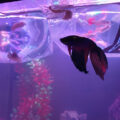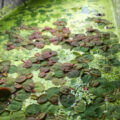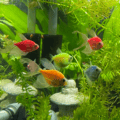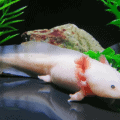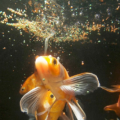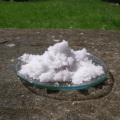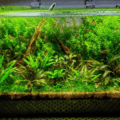When it comes to owning fish, serpae tetras are a popular choice for many aquarium enthusiasts. These small, vibrant fish are known for their peaceful nature and stunning appearance. In this article, we will delve into the world of serpae tetras and answer the burning question: Are serpae tetras bottom dwellers?

Serpae tetras, also known as red minor tetras, are a species of freshwater fish native to South America. They are part of the Characidae family and can be found in various regions such as the Amazon basin and the Orinoco River. These beautiful fish are small in size, typically reaching an average length of around 2 inches.
Physical characteristics and behavior play a significant role in understanding the habitat and tank setup requirements for serpae tetras. These tetras boast stunning vibrant red-colored bodies, with a distinctive black spot near their caudal fin. This coloration adds an eye-catching charm to any aquarium.
Habitat and Natural Behavior of Serpae Tetras
In their natural habitat, serpae tetras inhabit slow-moving rivers, streams, and flooded areas. These peaceful fish are known for their shoaling behavior and prefer to be in the company of their own species or other compatible fish. They tend to swim in the middle and lower levels of the water column, making them middle and bottom-dwellers.
Feeding Patterns of Serpae Tetras

When it comes to their diet, serpae tetras are not picky eaters. In the wild, they primarily feed on small insects, worms, and plant matter. As pets, they readily accept various types of fish food, including flakes, pellets, and freeze-dried options. It is important to provide a balanced and nutritious diet consisting of both dry and live food to ensure their optimal health and vibrant coloration.
Breeding and Habitat for Serpae Tetras
Breeding serpae tetras can be a rewarding experience for beginner fish keepers with the right setup. These vibrant freshwater fish require clean water, plenty of plants, and peaceful surroundings for successful spawning. Live or frozen foods, such as brine shrimp, are essential for conditioning them during the breeding process.
Freshwater snails can also help maintain a clean environment by consuming uneaten food. Ensuring the presence of suitable tank mates and providing proper care will not only support breeding efforts but also create a thriving habitat where serpae tetras live happily and display their stunning colors.
Tank Setup for Serpae Tetras

Now let’s talk about the tank setup for serpae tetras. These fish are best kept in a tank with a minimum capacity of 20 gallons, as they are active swimmers. Decorate the tank with plenty of plants, rocks, and driftwood to mimic their natural environment. A sandy substrate is ideal for their bottom-dwelling tendencies and provides a comfortable surface for them to explore and forage.
When it comes to the water parameters, serpae tetras prefer slightly acidic to neutral water with a pH range of 6.5 to 7.5. The temperature should be maintained between 72 to 79 degrees Fahrenheit. It is important to ensure proper filtration and regular water changes to maintain optimal water quality.
When selecting tankmates for serpae tetras, consider their peaceful nature and their need for a harmonious community. Good tankmates include other peaceful fish species such as tetras, rasboras, and small catfish. Avoid housing them with aggressive or fin-nipping fish as this may lead to stress and damage to their vibrant fins.
Suitable Tank Mates for Serpae Tetras

Serpae tetras thrive in community tanks when paired with suitable tank mates. These vibrant freshwater fish are happiest when kept in groups as schooling fish, allowing them to display their natural social behaviors. Ideal companions include other tetra species like the jewel tetra and red phantom tetra, as they share similar temperaments and activity levels.
Beginner fish keepers should avoid pairing them with tropical fish that have delicate dorsal fins, as serpae tetras may nip at these. Freshwater snails can also be added to the tank to maintain cleanliness by consuming algae and uneaten food, creating a balanced and healthy environment.
Common Health Issues and Care for Serpae Tetras

Like any other fish, serpae tetras are susceptible to certain health issues. Some common ailments include fungal and bacterial infections, parasitic infestations, and swim bladder disorders. Keep a close eye on their behavior, appetite, and physical appearance to detect any signs of distress or illness.
Regular care and maintenance are crucial for the overall well-being of serpae tetras. Perform regular water changes, monitor water parameters, and provide a well-balanced diet to promote their health. Additionally, quarantine new fish before introducing them to the existing aquarium to prevent the spread of potential diseases.
Conclusion
In conclusion, serpae tetras are not strictly bottom dwellers. While they tend to occupy the middle and lower levels of the water column, they are active swimmers and can be seen exploring all areas of the tank.
Their peaceful nature and vibrant colors make them an excellent addition to community aquariums. By understanding their natural behavior, providing an appropriate tank setup, and offering a varied diet, you can ensure the health and happiness of your serpae tetras for years to come.

